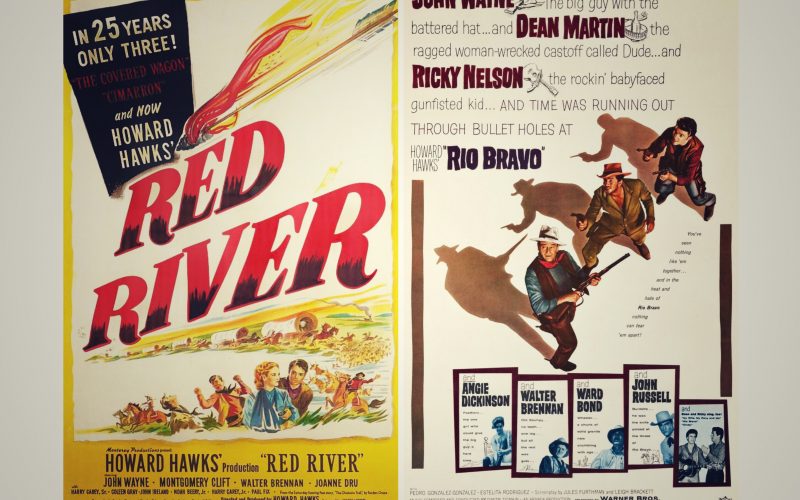Two Essential Westerns: Red River (1948) & Rio Bravo (1959).
When you think about the Westerns of John Wayne, certain images come to mind; rugged men, tough, resilient, violent. They live outdoors, they drink whiskey, and almost every one of them is a sharpshooter, able to pull off shots that seem, in the real world at least, to be impossible. They literally shoot from the hip, often at noon, down the length of the streets of Dodge or Shinbone.
Although he’s predominantly associated with director John Ford, Wayne made a number of great westerns with Howard Hawks, two of which – Red River and Rio Bravo – are perfect examples of the various subgenres of this classic genre. But these films, whilst existing in well-defined visual and storytelling tropes, also work to subvert the classical stereotype of the Western hero.
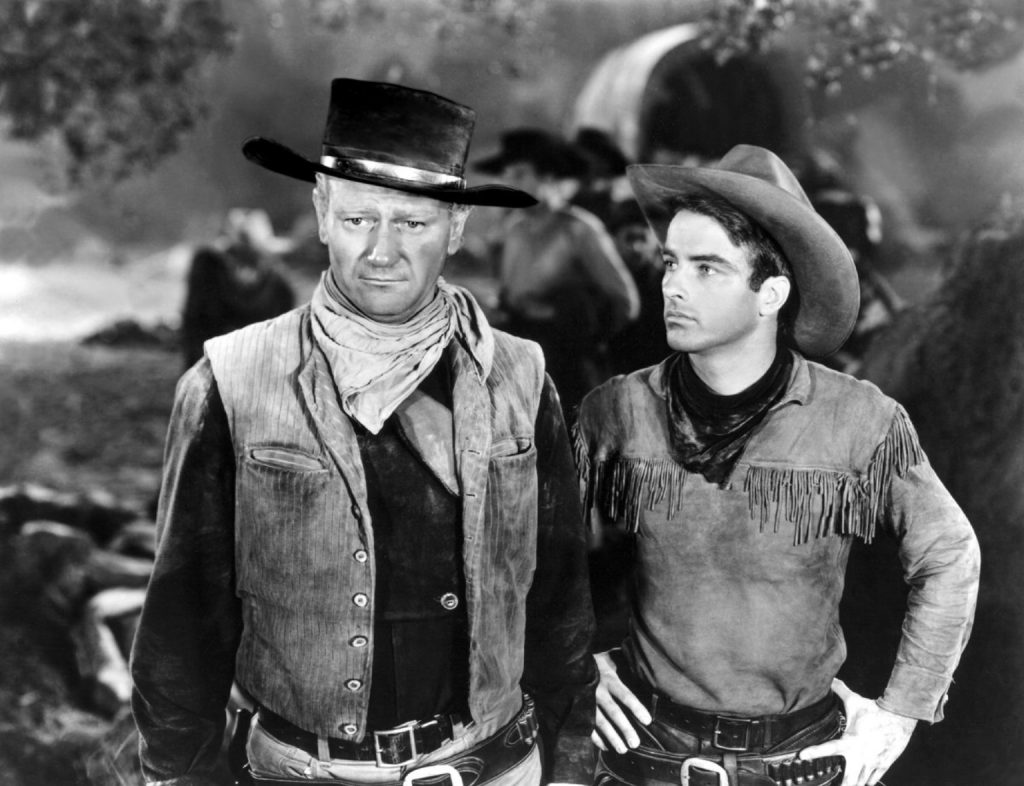
They do this subtly; on the surface the characters in these two films fit the definition of a cowboy. They wear the right clothes, they wear holsters and spurs, they speak in the accepted vocabulary of cowboys. This is important as Hawks uses these stereotypes and undermines them, making the characters richer and more interesting because of it.
In my review of the John Ford classic, The Man Who Shot Liberty Valance, I outlined two distinctive subgenres of the Western – the Cactus Rose and the Garden Rose. The Cactus Rose movies are about the taming of the West, when the deserts of the Western states were first being conquered and the United States were being created. The Garden Rose Westerns are set in small towns that, although wild, have been mostly conquered. The desert and the prairie have been tamed; civilisation has taken root and the iconic imagery of the wild have been replaced with picket fences, saloons and jailhouses. Here the hero is usually a Lawman who must defend his town and the values of the newly formed civilisation from bandits and outlaws.
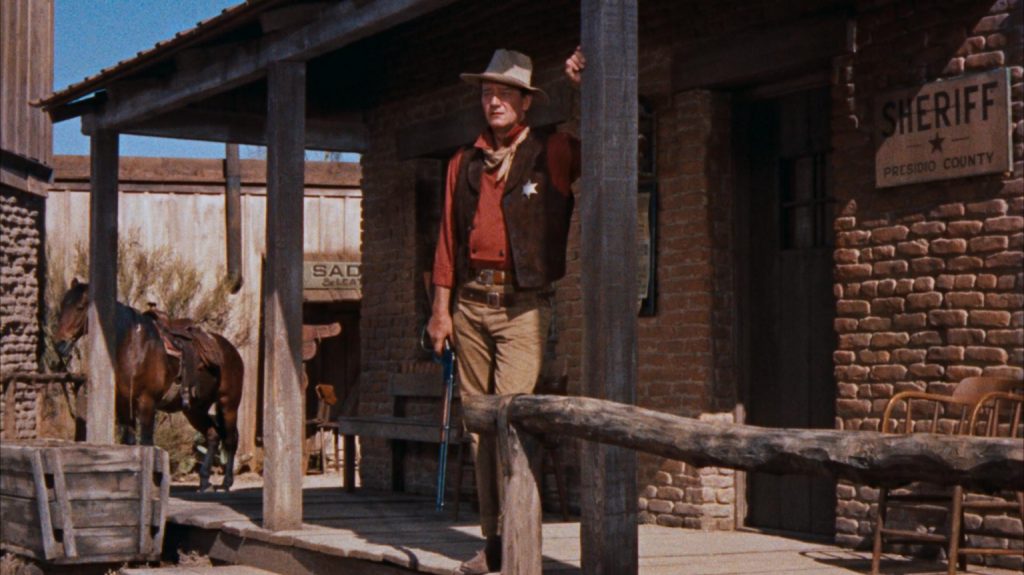
Both Red River and Rio Bravo are studies of duty and fear. None of the characters, when faced with the travails they are thrown, act with traditional stoicism. They feel fear, they don’t know what the outcome will be, and they know their lives are in danger, however they are also propelled by duty. They must carry on and accept the results, whatever they may be. That doesn’t make it easy though and, by confronting their own mortality, they become more interesting and relatable characters.
Red River was Howard Hawk’s first western. John Wayne stars as Thomas Dunson who, with just a bull and a cow, decides to settle in Texas to breed cattle. He is accompanied by Nadine Groot (Walter Brennan), an old man who has been Dunson’s companion for a number of decades, and Matt Garth (Montgomery Clift) a young boy who had been separated from his Wagon Train after it was attacked by Indians. Dunson is single minded, shooting the first person who disputes his claim to the land he has appropriated. He has a vision and is determined to succeed, no matter who or what gets in his way.

After this introduction we move forward 14 years when Dunson is the owner of the biggest herd of cattle in Texas. Unfortunately he is broke. He needs to sell his herd to pay his men and to ensure his livelihood can continue. To do so he must drive his cattle to a suitable town to sell them. He knows there is a buyer in Missouri but to get there he must confront bandits and killers who want to steal his herd and, if he resists (which he and his men inevitably will), they will kill everyone of them. There are rumours that a railway has been built in another state, but he doesn’t trust this information as it’s second or even third hand.
It’s his fear that drives him. He’s willing to gamble his cattle and the lives of himself and his men to achieve his goal. And he pushes them hard, mercilessly punishing anyone who questions him or tries to pull out. Mutiny starts to brew and it’s his own adopted son, Matt, who pushes the mutterings of discontent, into a fully-fledged rebellion. He takes control of the herd and sends Dunson home, knowing that his mentor will probably hire a group of killers and come after them.
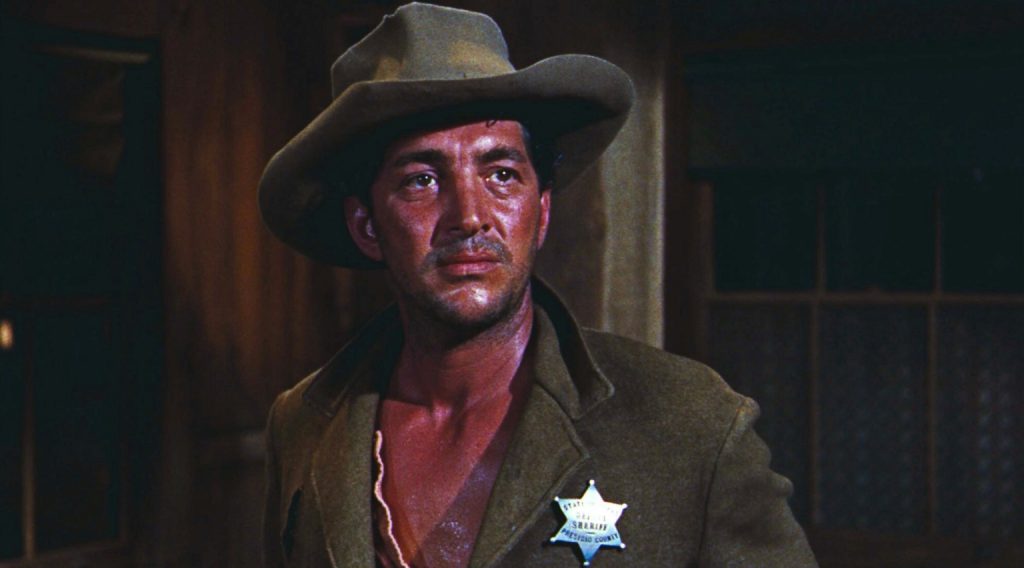
The second half of the film sees Matt driving the herd, not to Missouri but to Arkansas, the safer but more uncertain route. Throughout this journey, the spectre of Dunson hangs over them all. They calculate how long it will take before the boss catches up to them. There is always the constant worry that they have chosen the wrong route, that Dunson was right all along.
Red River is of course about tough men, but what makes this film special, and certainly more interesting, is the fear each man experiences. It makes the journey more interesting. These are not just flaws; they are real human feelings.
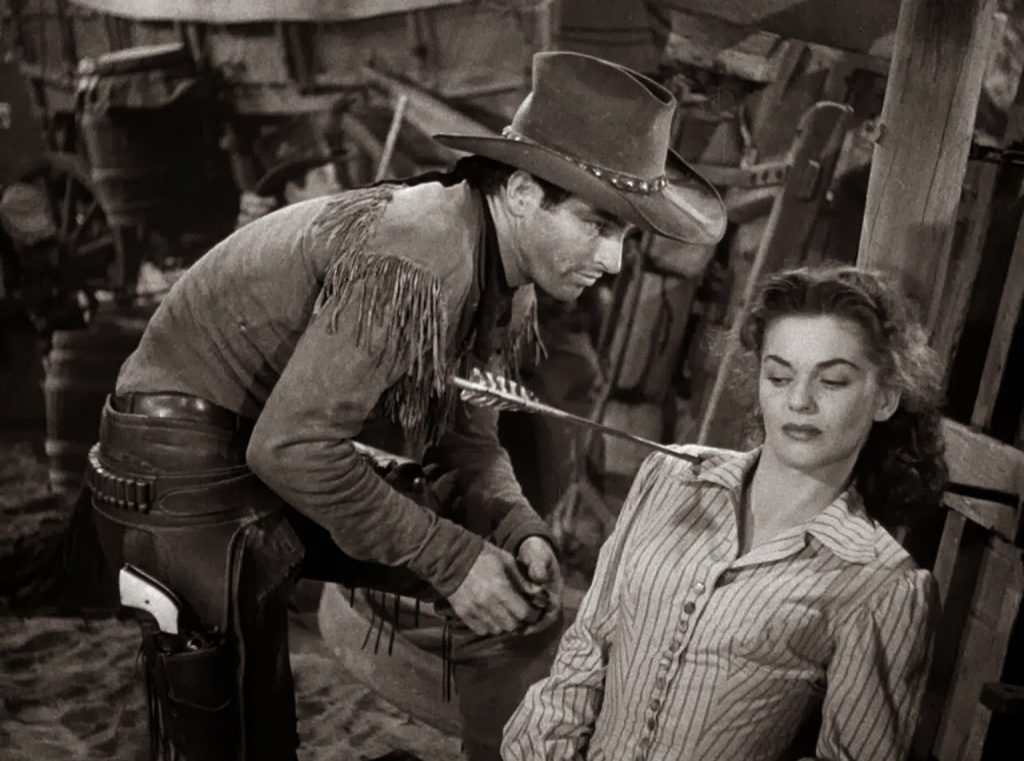
Hawks’ 1959 western, Rio Bravo, begins by exposing a man’s flaw in abjectly humiliating circumstances. In a brilliant sequence which recalls the director’s first silent films, Duke (Dean Martin) enters a saloon, his addiction wrought plainly on his face. He slowly manoeuvres past the tables trying to build up the courage to ask for a free drink. But, like Red River, it is the protagonist’s fear that propels them.
John Wayne is sheriff John T. Chance. The West has been defeated and the town has sprung up. This is a Garden Rose Western; the battle is not against the desert, but for the burgeoning civilisation. At the end of the opening scene, one devoid of dialogue, a man is killed, Joe Burdette, the brother of the local bad guy, Nathan Burdette, is arrested. He’s not worried as he knows his brother will save him. Chance, aided by Duke and an old cripple, Stumpy (Walter Brennan again) must keep a constant vigil, knowing they could be raided at any moment.
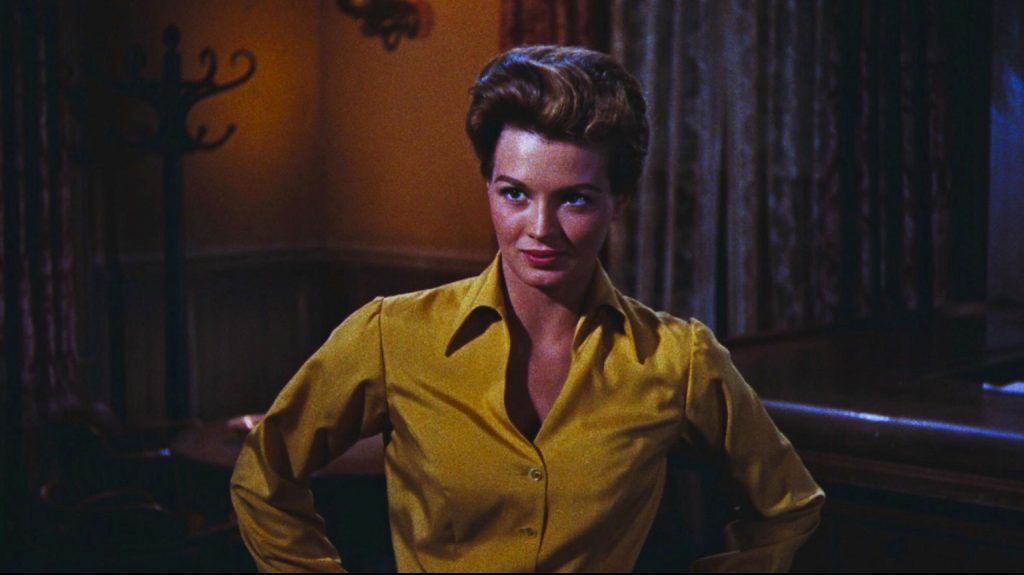
The differences with Red River are obvious – the first is set in the wide-open American landscape, the second in a small town. The milieu of Red River is the wide-open spaces and the endless skyline, Rio Bravo is streets, alleyways, hotels, bars and the jail house of a small town. The threat in Red River comes from within as the group turns on itself; in Rio Bravo it comes from the outside – it’s not just the characters that are at risk, it is the town (and by extension – civilisation) itself.
Both films feature a strong woman who will stand up to the men, drink with them and fight with them if need be, all the while maintaining a very real and attractive femininity.
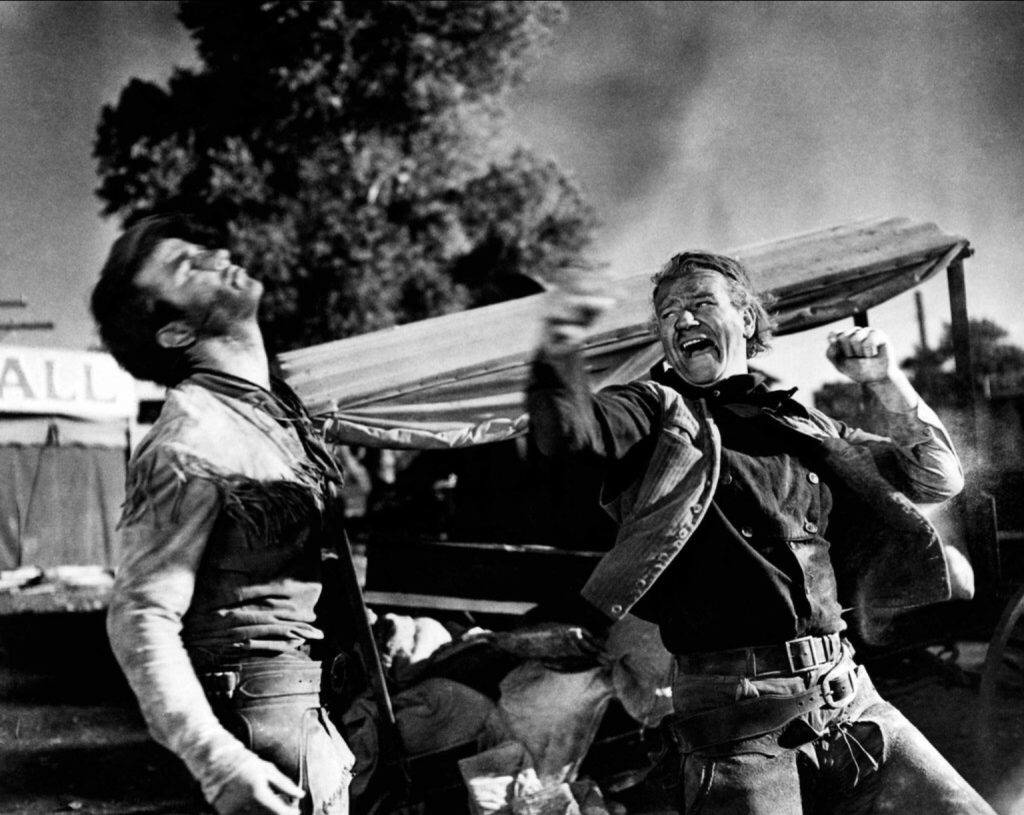
In Red River, Tess Millay (Joanne Dru) is as tough as the men. When we first meet her, she is defending a wagon train; she has the skill, grit and tenacity as any cowboy, and can hold her own in the most difficult and perilous of situations. She is a real tough country girl. In Rio Bravo we have Feathers (Angie Dickerson). Feathers is of similar mould to Tess although the world in which she operates – the bars and poker tables of the towns and cities – is almost the complete opposite. I found it very easy to fall in love with Feathers because she is so confident, so determined, yet has a vulnerable side which is appealing. Her relationship with Chance is one of the highlights of Rio Bravo.
Feathers: “I thought you were never going to say it.”
John T. Chance: “Say what?”
Feathers: “That you love me.”
John T. Chance: “I said I’d arrest you.”
Feathers: “It means the same thing, you know that.”
Red River and Rio Bravo make a perfect double bill. They are studies of duty, of honour, of manliness. Hawks, Wayne, Brennan and the others work together wonderfully. There is no weak link in either film. It is easy to see why the French loved Hawks so much and made him one of the central directors of their Politique des auteurs (Auteur Theory). He directed a wide range of films, from westerns to comedies to action and adventure. None of the women in his films were flimsy – even Rita Heyworth in Only Angels Have Wings can stand up to the men around her even though she is completely out of her depth in an alien climate. But what makes Hawks so special, and what makes his films so relevant, was the simple fact that he liked to subvert expectations – even in an established genre like the Western.
The main characters in both Red River and Rio Bravo are real. They aren’t one dimensional, they have strengths but also weaknesses. Even Chance’s stoic professionalism is under-pinned with fear. Dunson, propelled by fear and alcohol, believes in what he’s doing and will do whatever it takes, even when he’s in the wrong. John Wayne used to joke that he could only play one role – John Wayne – but all you have to do is see him in these two films, alongside The Searchers (reviewed here) and The Man Who Shot Liberty Valance (reviewed here) to see the breadth of characterisations Wayne could achieve if the script and director were right.
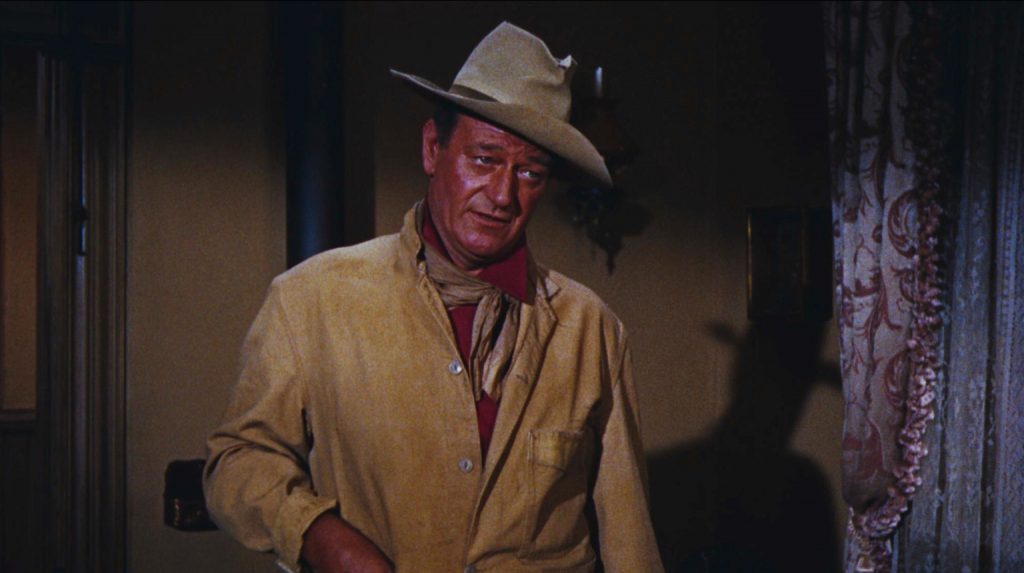
Alcoholism is portrayed very differently in the two films. Dunson drinks to fuel his rage, Duke drinks because he has lost all hope. Both men have been humiliated – one turns to the bottle, the other struggles to turn away from it.
If I had to chose one, I would always go for Rio Bravo, although the distinction between the two is negligible and both rank as two of the finest westerns ever made. Viewed together each one enhances the other. I would recommend watching them as close to each other as possible. This could be said for so many Hawks movies and I would highly recommend too many of them to write about here, however, if you are a lover of the western then Red River and Rio Bravo are two essential examples of the genre.
Film ‘89 Verdict:
Red River – 10/10
Rio Bravo – 10/10
For more discussion of Red River and Rio Bravo, check out Episode 34 of The Film ‘89 Podcast where John Arminio & Skye Wingfield are joined by guest-host and author, J. Blake Fichera.

